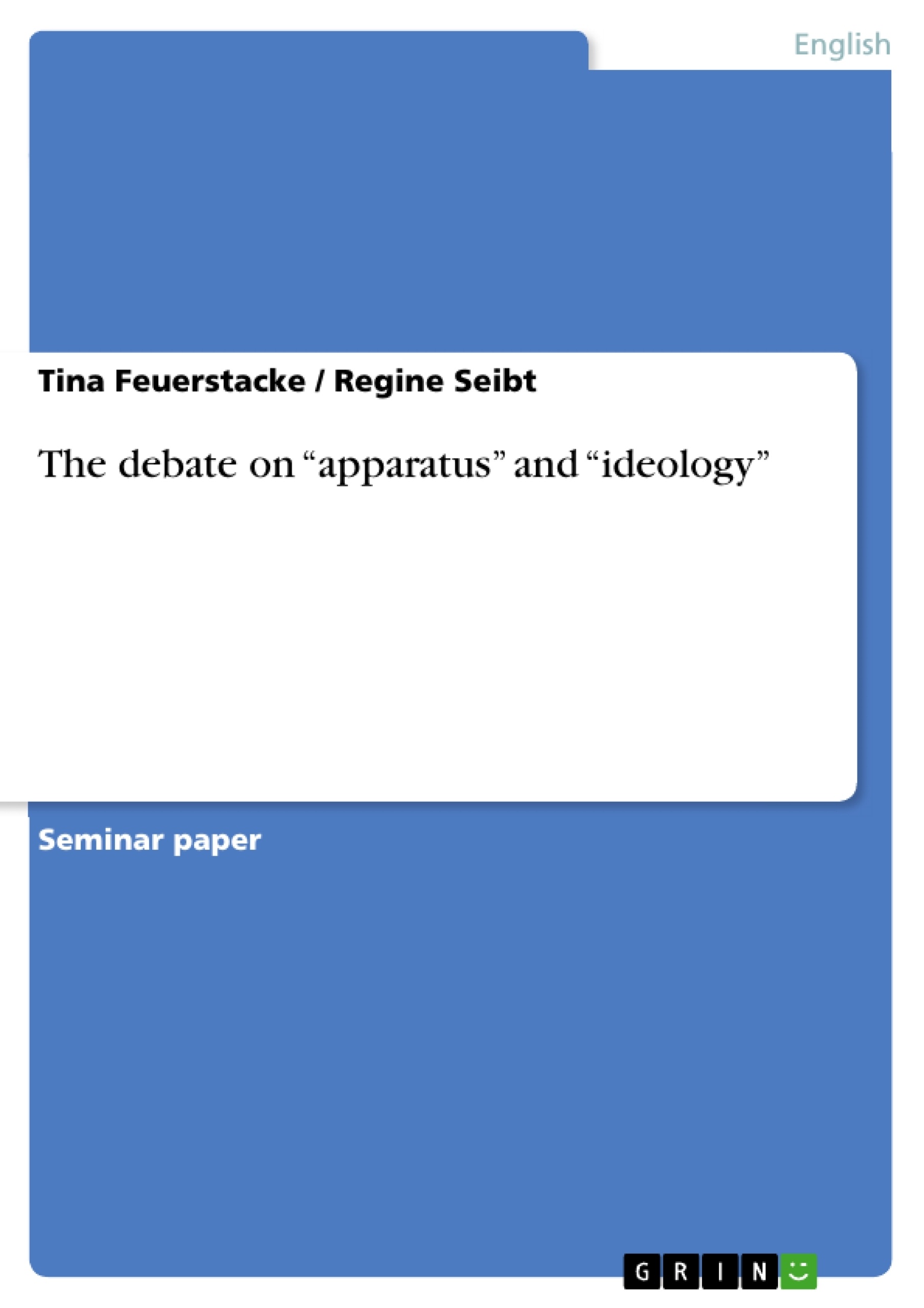The medial reproduction is not simply a repetition of reality, but a certain form of interpretation, which depends on, among other things on technical reproduction facilities. In particular the technique of photography and film organize pictures and sounds in a way, which precede the artistic access to the material.
If certain basic techniques of the apparatus already preform the perception, is this technology the condition of their possibilities? In other words: Does the technique of production determine the artistic statement, and therefore should technique be inquired for its possible contents?
Especially the film theory during the early seventies they try to make an attempt to broach the issue of the “ideology” of technology above all medial contents and its artistic organization: This beginning is called the apparatus debate. More exactly, the object of investigation was no longer only the film as a formal or aesthetic thing, more important was the total apparatus of cinema, in which the spectator takes a substantial role and carries in his experiences as a subject.....
Inhaltsverzeichnis (Table of Contents)
- Introduction
- Representative of the apparatus debate and their point of view
- Technical point of view
- Suture Theory
- Ideology
- Conclusion
Zielsetzung und Themenschwerpunkte (Objectives and Key Themes)
This paper examines the “apparatus debate” in film theory, focusing on the concept of technology as an ideological force that shapes cinematic representation. It explores the argument that the technical apparatus of cinema, such as the camera, produces a specific perspective and ideology that pre-conditions the spectator's perception.
- The role of the camera and other technical equipment in shaping cinematic ideology
- The impact of technology on the spectator's perception of reality
- The relationship between cinematic apparatus and the production of ideology
- The historical evolution of film technology and its influence on representation
- The concept of "suture" as a mechanism of ideological control in cinema
Zusammenfassung der Kapitel (Chapter Summaries)
The introduction sets the stage for the apparatus debate by exploring the concept of medial reproduction and the role of technical reproduction in shaping interpretation. It argues that the technical apparatus of cinema pre-conditions perception and questions whether technology determines artistic expression. The second chapter delves into the viewpoints of prominent figures in the apparatus debate, including Marcelin Pleynet, Jean Louis Baudry, J.P. Lebel, and Jean Louis Comolli. It examines their arguments regarding the ideological nature of the cinema apparatus and its impact on the spectator.
Schlüsselwörter (Keywords)
The key terms and concepts explored in this text include cinematic apparatus, ideology, technology, representation, perception, suture, spectator, and film theory. The paper examines the ways in which the technical aspects of filmmaking contribute to the production and dissemination of ideology.
- Citation du texte
- Tina Feuerstacke (Auteur), Regine Seibt (Auteur), 2005, The debate on “apparatus” and “ideology”, Munich, GRIN Verlag, https://www.grin.com/document/65819



